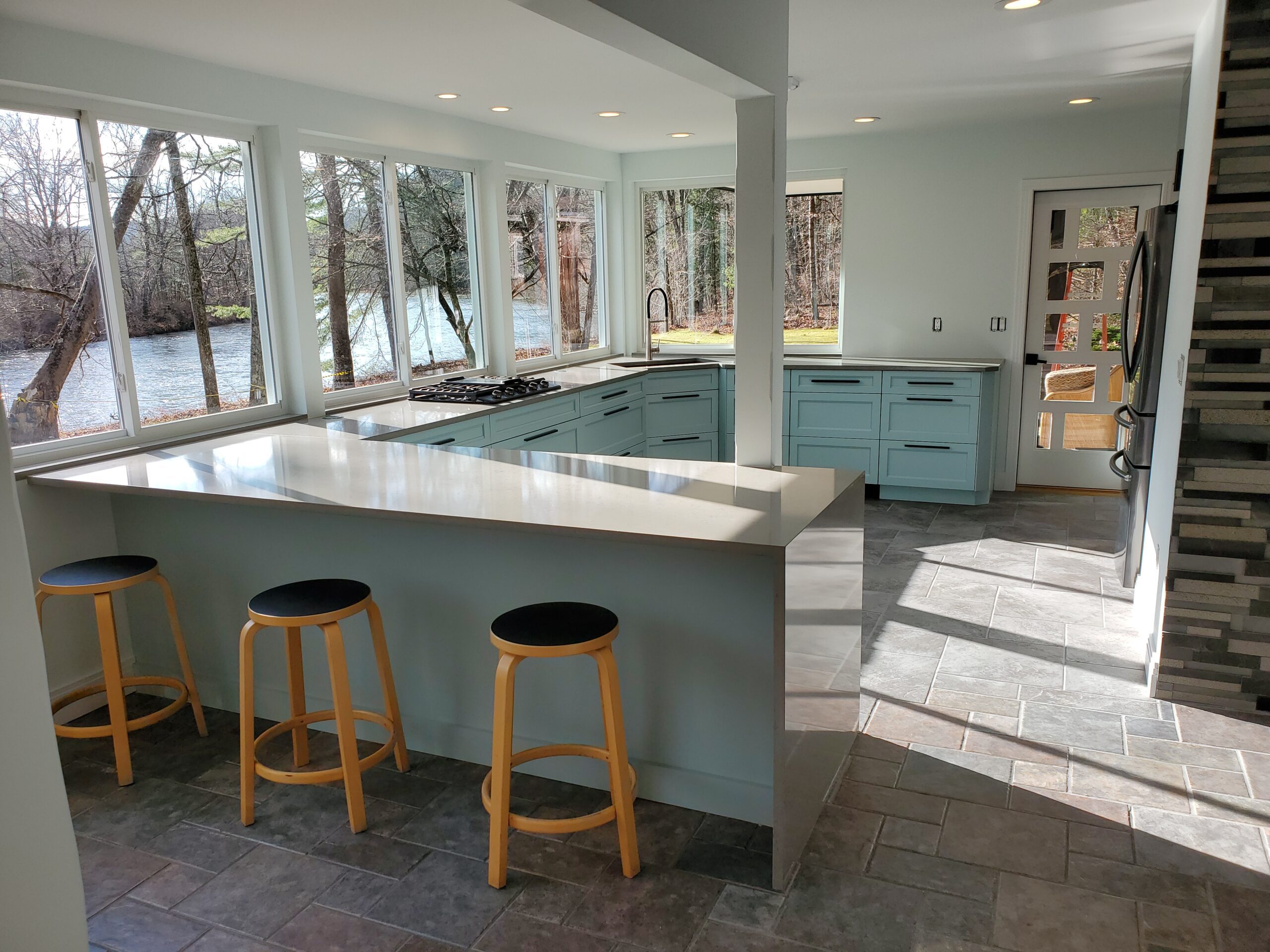West Hartford Town Council Approves Additional Building for Steele Road Apartment Complex

Audio By Carbonatix
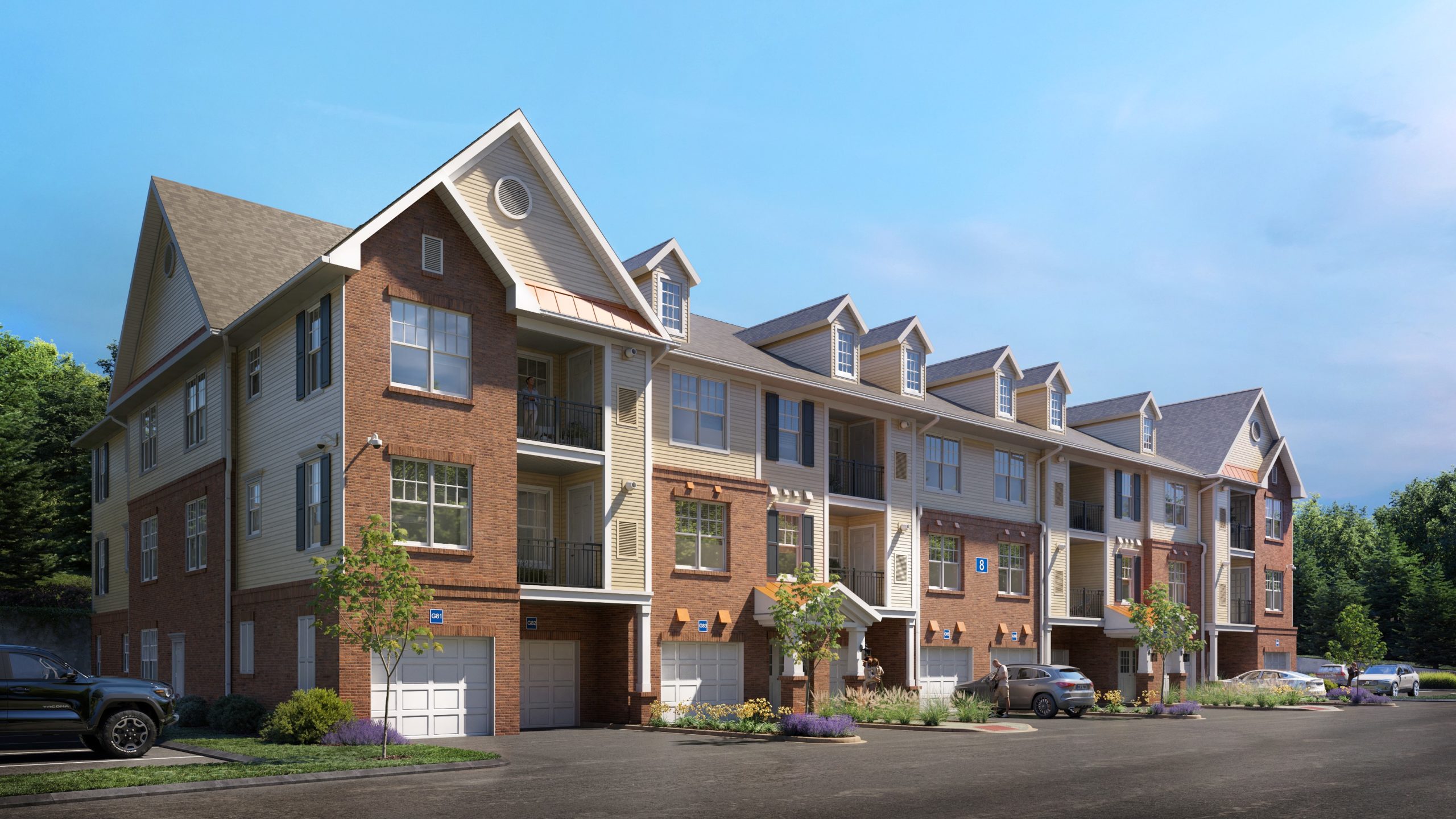
Rendering of Building 8 which will be constructed at the 243 Steele Road complex. Courtesy of The Metro Realty Group
The West Hartford Town Council voted unanimously in favor of permitting an eighth building to be constructed at 243 Steele Road.
By Ronni Newton
The 243 Steele Road complex will expand by 18 units, with the West Hartford Town Council giving a unanimous thumbs-up to the request by Steele Road, LLC to construct an eighth building on the property.
The property, which currently has 190 units, is 100% occupied. “Since the pandemic, we have managed a waiting list for 50-plus homes at our development,” Geoffrey Sager, president of Metro Realty Group and managing member of Steele Road, LLC, told the Council during a public hearing on April 11, prior to the vote.
When the development was first proposed in 2014, approval followed a lengthy public hearing that lasted until 2 a.m. In August 2014, the Town Council approved a 150-unit development at 243 Steele Rd. by an 8-1 vote. In January 2016, the proposal was modified to permit 160 units to be built. In February 2018, a seventh building of 30 units was approved by the Council, also by an 8-1 vote.
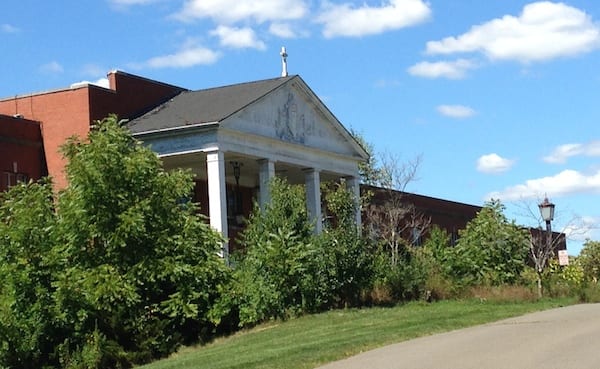
The former Mercyknoll convent at 243 Steele Road. Photo by Joy Taylor (we-ha.com file photo)
Prior to development by Metro Realty Group, the property – which is on the corner of Steele Road and Asylum Avenue, between the University of Saint Jospeh to the west and the senior living community the McAuley to the north, was a Sisters of Mercy convent, and was then partially converted to a skilled nursing facility. Mercyknoll residents were relocated by 2006, Sager said, and the property was vacant until it was demolished in 2016 when 243 Steele Road was constructed.
Sager reviewed some of the concerns that that were expressed about the initial proposal – tangible as well as intangible.
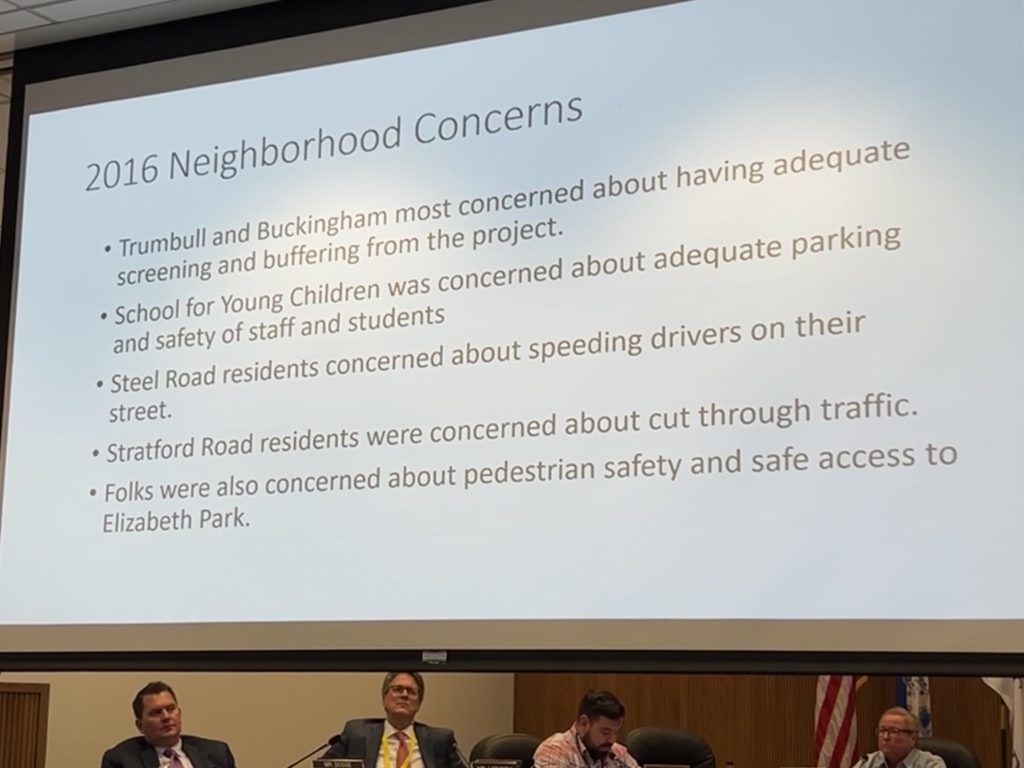
Neighborhood concerns about the original 243 Steele Road proposal. Photo credit: Ronni Newton
Mitigations paid for by the developer to address the tangible concerns – an investment of nearly $1 million – included adding a pedestrian walk phase to the light at Asylum, making Stratford Road a dead end, traffic calming on Steele Road, and a flashing speed limit sign. Teachers at the School for Young Children used to park in the lot at the school and then parents would park along Steele Road to drop off and pick up their children, and to address that issue Metro Reality permanently reserved 24 parking spaces at 243 Steele Road for use by teachers so parents could have access to the school’s lot.
“As long as that school is in operation those spaces are there and reserved for their benefit,” Sager said.
Sidewalks were also constructed to allow access between School for Young Children, 243 Steele Road, and the University of Saint Joseph, with which SYC is affiliated.
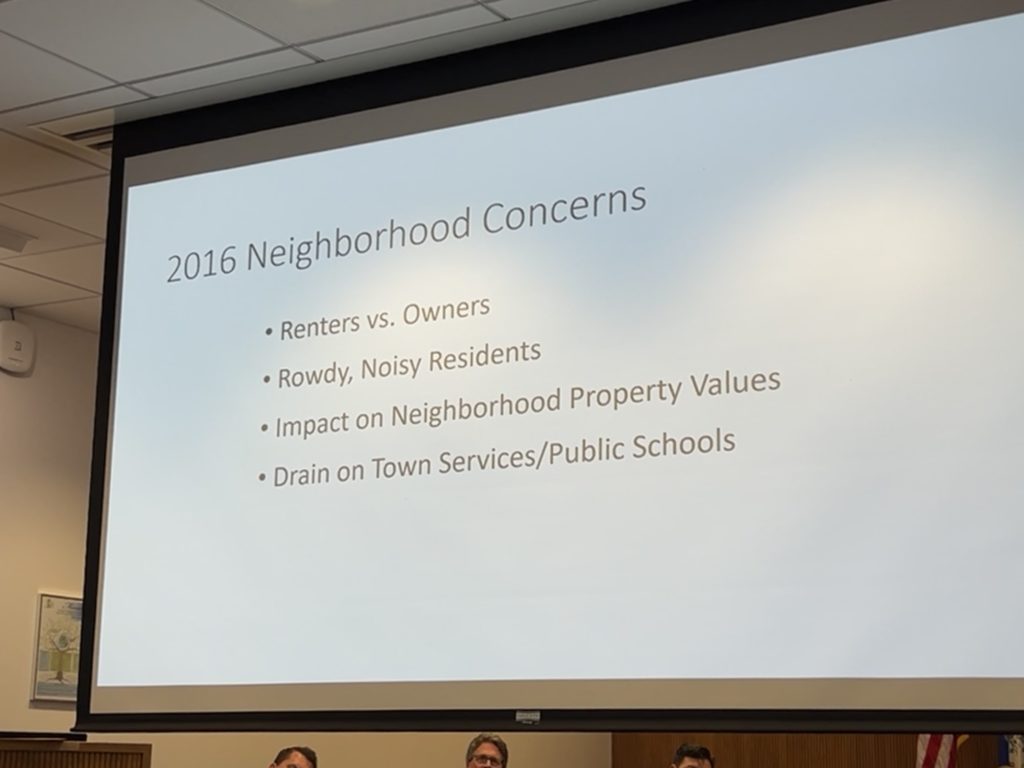
Neighborhood concerns about the original 243 Steele Road proposal. Photo credit: Ronni Newton
As for the intangible concerns like rowdiness and renters not keeping up their property, the impact on neighboring property values, and a drain on the schools and other town services, “None of those came to be,” Sager said.
He shared the current demographics of those who live at 243 Steele Road, and there are only 12 school-age children. The median age is 35, and 36% are empty nesters, he said. The median income for the one-bedroom units is $124,500 and for two-bedroom units it’s $172,000. The property generates $1.15 million in taxes for the town, not including what residents pay for their vehicles and personal property.
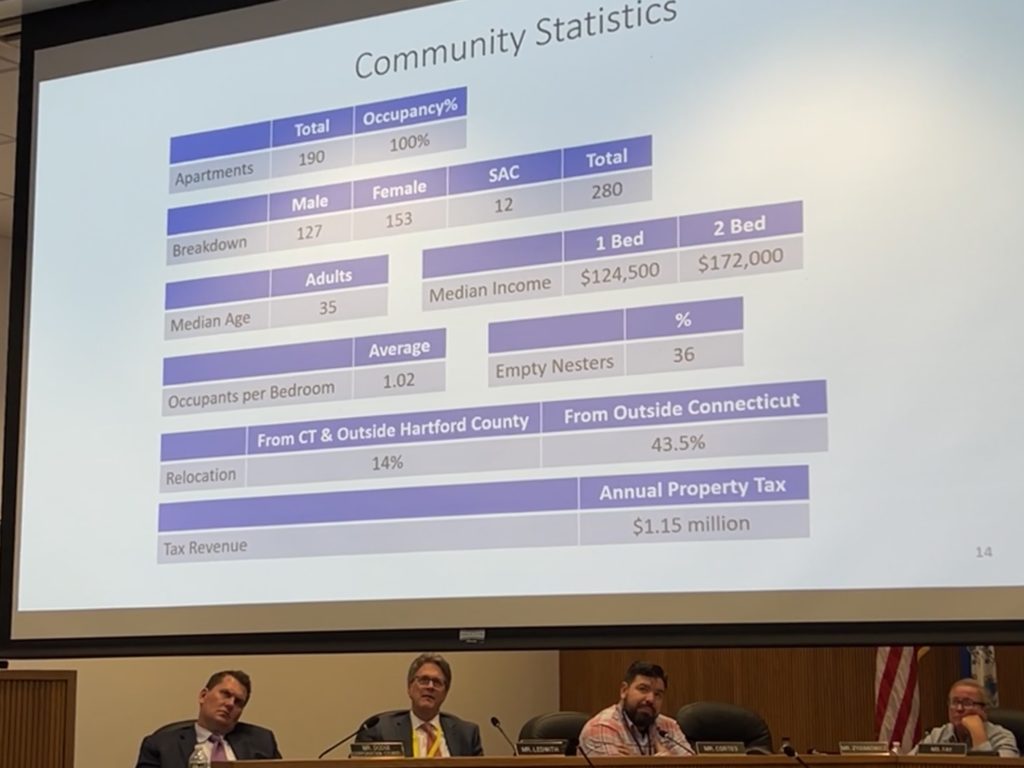
Demographics of current 243 Steele Road residents presented by Geoff Sager of Metro Realty. Photo credit: Ronni Newton
Sager also noted that although there was a revision of the lot line between 243 Steele and the McAuley that was approved by the Town Council earlier this year, no portion of the new building will be constructed on that swapped property which gave the McAuley 2/3 of an acre (that includes a piece of their driveway) in exchange for 1/3 acre.
When he approached the Council in 2018 for permission to construct a seventh building on the property, the housing market was very different and it was a tough time for residents to sell their homes.
“That is a very different fact pattern than existed in 2018,” Sager said. It’s now a sellers’ market, but residents need a place to live if they want to downsize, more people are working from home, and since the pandemic there has been an influx of adults from other cities. In addition, adults who are already renting are upgrading to better apartments with more space and better amenities.
“We would like to reinvest in West Hartford,” he said.
The new building will add 18 more units, with 10 one-bedroom units and eight two-bedroom units, and a total of 10 garages. While building eight is smaller, the style and architecture is identical to the existing buildings and will be an energy star “green” building.
Construction vehicles will access the site through the McAuley, and when the work is completed Metro Realty will completely reconstruct the driveway. None of the McAuley parking spaces will be used by construction employees.
“We have worked extensively with our neighbor to the north, the McAuley,” Sager said, on a very robust screening and planting plan. He said they are satisfied with the plan which includes 50 trees – 38 evergreen and 12 deciduous. While some residents expressed a desire to have wildflowers planted as well, the landscape architect working on the project said they would not do well because the land faces north and there is a lot of shade due to the screening.
Chuck Coursey, who handled outreach as part of the developer’s application to the Council, said during the public hearing that he had three meetings with area residents. Concerns were primarily noise and parking. The complex does not have assigned parking spaces, but Coursey said plans are to reconfigure the parking so that there will be more convenient spaces near units.
“Why do you need more units?” Coursey said. The question of whether or not this development is a “burden or benefit to West Hartford” is clear, it adds to the community and tax base. This is a unique property that is more suburban and not as dense as the apartments near the center. The utilities are already there, and “this is a sustainable proposal,” he said.
There were three speakers at the public hearing, including Allen Freschler, a resident of the McAuley. He said he feared that the marketing of the McAuley property to potential residents would be impaired by the ongoing construction.
Michael Bohm, who was one of the first residents of 243 Steele Road, spoke in favor of the expansion. He said after working as an engineer in various cities for 36 years, he and his wife “decided we wanted to make West Hartford our home.” While it was hard to wrap their arms around the idea of moving back into an apartment, when they looked at this property they changed their mind.
“That long list of people – they’re not going to get our two-bedroom,” he said, referencing the wait list, which includes some of his friends have applied and are on list.
Erika Cherko-Soykan, a resident of building 7 at 243 Steele Road expressed several concerns – one of which was unrelated to the project but is an envirnmental hazard that will be addressed, town officials said. She said there is a back-up diesel generator at the McAuley that doesn’t have a proper generator and spews fumes into her unit. When the generator is tested monthly, she said, “it’s like 10 tractor trailers spewing exhaust.” The worst of it was when her daughter was an infant and there was a power so the windows were open.
Cherko-Soykan also expressed dissatisfaction with the communication by staff at 243 Steele Road when there was a recent break-in, and said also had concerns that the ratio of parking spaces to units will be decreased from 1.6 to 1.52 spaces per units with the new building causing people to have to fight for spaces. Sager said a camera has now been added to the rear of building 7 where the intrusion occurred, and said there will only be a net loss of two parking spaces.
The proposal for the eighth building included a provision for one of the units – a one-bedroom unit – to be set aside as affordable housing for residents earning 80% of the area median income (AMI).
“Why bother?” Deputy Mayor Liam Sweeney asked regarding the decision to have 5% (one unit) set aside as affordable since all of the rest of the units in the complex are market rate. Sager said he has developed many affordable housing projects and made the decision based on guidance from the community.
“For that person it’s meaningful,” Sager told Sweeney.
Sweeney asked if he would be able to make the affordable unit a two-bedroom rather than one-bedroom unit, so a family could live there. “Sure,” Sager said. “I’m agreeable to that.”
That modification, along with specifying a 40-year deed restriction so it would count toward the town’s affordable housing requirement under the 8-30g regulations (rather than the initial 20-year proposal) was made part of the conditions of approval.
Council members, before giving unanimous approval, thanked the applicant and town staff for their work on the proposal.
“I would like to thank the applicant for continued investment in West Hartford,” Sweeney said when it came time for the Town Council to vote. Affordable units do change lives, he said, and “making investment in a family unit can change lives for multiple people.”
Councilor Al Cortes said that getting a lease for an affordable unit is like buying a winning lottery ticket. There is a great demand, and while it “doesn’t solve the issues in town,” every little bit helps.
Council member Deb Polun said she was satisfied that all of concerns raised by expert town staff have been addressed. “As was mentioned we do have a housing crunch here in West Hartford and throughout the state” she said, and while this isn’t going to solve it will be a piece of the puzzle.
Minority Leader Mary Fay said she has concern about the volume and rate of development in town – hundreds of units either approved and in construction or close to breaking ground – and the impact on traffic. “There are a lot of these coming in at the same time,” she said, and she questions the demand on resources. “I do have concern about the overall trajectory we’re on right now but it wouldn’t be fair of me to penalize this development.”
Mayor Shari Cantor thanked Sager for his investment, and noted that the improvements made at his expense have improved the neighborhood.
“This is a unique development. It is something that is not repeated throughout our community and it is desirable,” Cantor said.
Like what you see here? Click here to subscribe to We-Ha’s newsletter so you’ll always be in the know about what’s happening in West Hartford! Click the blue button below to become a supporter of We-Ha.com and our efforts to continue producing quality journalism.


